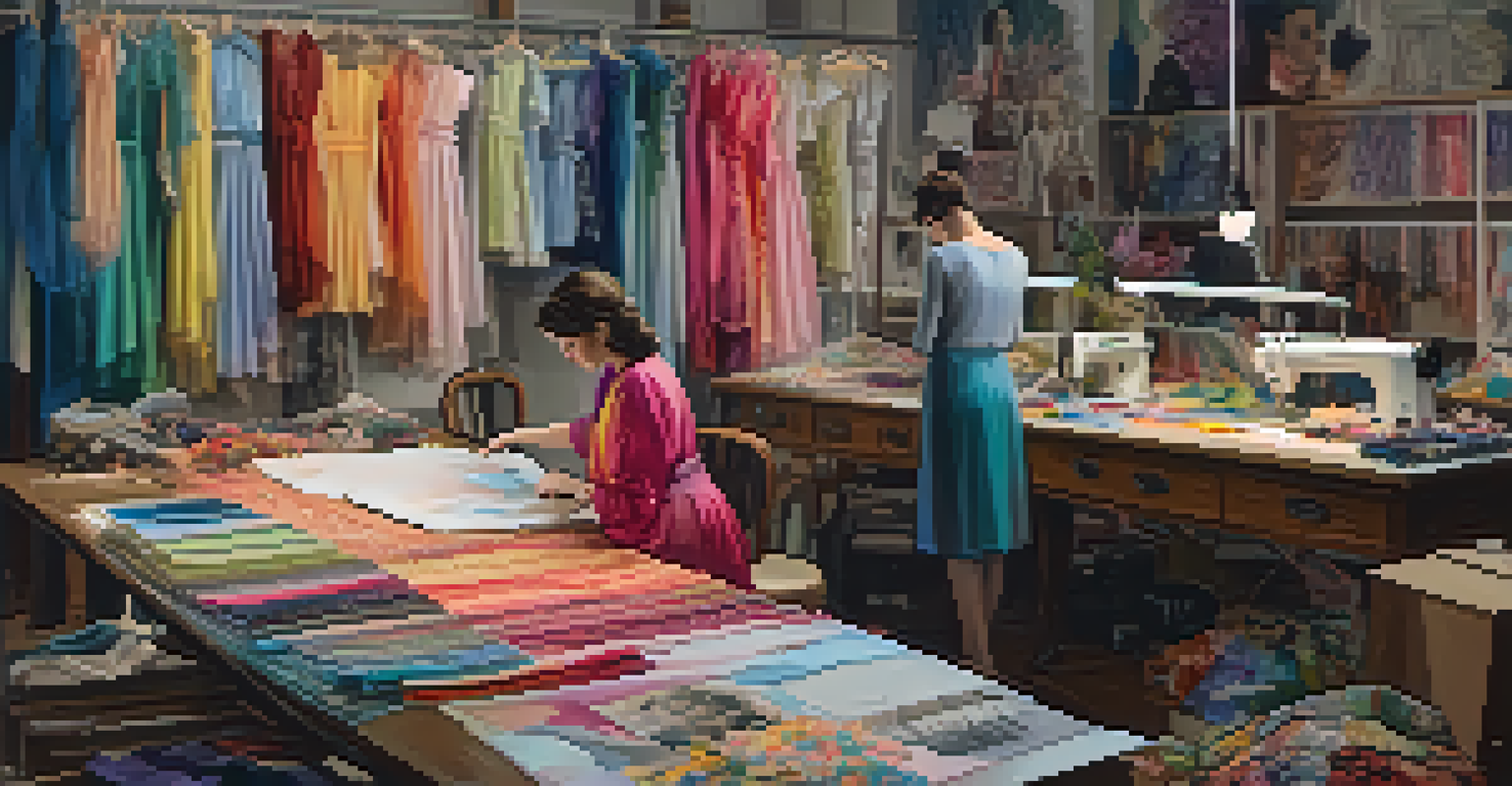Behind the Scenes: Denver's Theater Production Process

The Spark of Creativity: Concept Development
Every great production begins with a spark of creativity. In Denver's theater scene, this often starts with brainstorming sessions where directors, writers, and producers come together to share ideas. They explore various themes, stories, and styles, which sets the foundation for the entire production.
The theater is a world of contradictions and surprises, and we must embrace that complexity to create something beautiful.
During these initial discussions, the team considers the target audience and the message they want to convey. This is a crucial step, as it helps to shape the narrative and ensures that the production resonates with viewers. Collaboration is key here, as diverse perspectives can lead to richer, more engaging stories.
Once a concept is agreed upon, the team outlines the vision for the production, including the tone, style, and key elements. This stage is all about turning ideas into a cohesive plan that will guide the entire production process.
Casting: Finding the Perfect Fit for Each Role
Casting is one of the most exciting yet challenging parts of theater production. In Denver, auditions are held to find actors who not only fit the roles but also bring unique interpretations to their characters. This process often includes monologue readings, improvisation, and even group scenes to gauge chemistry among actors.

Directors and casting agents look for more than just talent; they seek individuals who can embody the essence of their characters. This means considering factors like voice, physicality, and emotional range. It’s a meticulous process, but finding the right actors can elevate the entire production.
Collaboration Sparks Creativity
Theater productions thrive on brainstorming sessions where diverse perspectives shape engaging stories.
Once the cast is selected, the real magic begins. Actors immerse themselves in their roles, often spending weeks rehearsing to develop their characters and understand the dynamics of the story.
The Role of Set Design in Storytelling
Set design plays a crucial role in bringing a production to life. In Denver's theaters, designers work closely with directors to create environments that enhance the story. This can involve everything from selecting colors and materials to constructing elaborate backdrops that transport audiences to another time and place.
The best part about theater is that it’s a shared experience, a moment where we all come together to feel, to reflect, and to connect.
The design process often begins with sketches and models, allowing the team to visualize the space before it’s built. Designers consider factors like lighting, space, and how the set interacts with the actors. This collaboration ensures that the physical space aligns with the emotional tone of the narrative.
As construction begins, the set comes to life, transforming the theater into a world that audiences can immerse themselves in. It’s a labor-intensive process, but the end result is a stunning backdrop that enhances the overall experience.
Costume Design: Creating Character Through Fashion
Costume design is another essential element in the theater production process. In Denver, costume designers collaborate with directors to develop outfits that reflect each character’s personality and the story’s setting. This involves researching fashion trends from different eras, fabrics, and colors that best represent the narrative.
Designers often begin by creating mood boards that showcase the visual direction they want to take. They consider how costumes will not only look but also how they will function on stage. Comfort and mobility are key factors, especially for actors who need to move freely in their outfits.
Casting Brings Characters to Life
Finding the right actors is essential, as their unique interpretations elevate the overall production.
The final fitting sessions are filled with excitement as actors don their costumes for the first time. This is when characters truly come to life, and the connection between the actor and their role deepens, adding another layer to the storytelling.
Rehearsals: The Heartbeat of Theater Production
Rehearsals are where the magic happens, acting as the heartbeat of any theater production. In Denver, these sessions can span several weeks, allowing actors to refine their performances, blocking, and timing. Each rehearsal builds upon the last as the cast and crew work to perfect their craft.
During this time, directors give feedback, and adjustments are made to both performances and technical elements. This collaborative effort ensures that everyone is on the same page and that the story unfolds smoothly. It’s a process filled with creativity, patience, and sometimes even improvisation.
As the opening night approaches, the energy in the rehearsal space intensifies. The cast and crew come together, not only to prepare for the show but to build a sense of camaraderie that often extends beyond the stage.
Technical Aspects: Lighting and Sound Design
The technical team plays a vital role in the success of a theater production, especially when it comes to lighting and sound design. In Denver, these artists work closely with the director and set designer to create an atmosphere that enhances the storytelling. Proper lighting can evoke emotions and highlight key moments in the performance.
Sound design is equally important, as it helps to establish the mood and tone of the production. This involves everything from selecting background music to creating sound effects that bring the story to life. The technical team spends countless hours ensuring that every cue is timed perfectly.
Community Engagement Enriches Theater
Local theaters foster connections through workshops and outreach, enhancing audience experiences and supporting artists.
As the opening night approaches, the technical rehearsals become crucial. This is when all elements come together, and the team fine-tunes the performance to ensure that every light and sound cue syncs seamlessly with the actors on stage.
Opening Night: The Culmination of Hard Work
Opening night is the grand culmination of all the hard work that goes into a theater production. In Denver, there’s a palpable buzz of excitement in the air as actors prepare to take the stage for the first time in front of an audience. It’s a moment filled with anticipation, nerves, and joy.
As the lights dim and the curtain rises, everything comes together in a beautiful display of talent and creativity. This is the moment when all the planning, rehearsals, and teamwork pay off, and the audience becomes part of the story. Actors immerse themselves in their roles, delivering performances that captivate and inspire.

After the show, the cast often gathers for a post-performance celebration, reflecting on the journey they’ve shared. It’s a time to acknowledge the effort of everyone involved and to embrace the magic of theater that brings people together.
The Impact of Community and Audience Engagement
Community engagement is a vital aspect of Denver's theater scene. Local theaters often host workshops, talkbacks, and outreach programs to connect with audiences and foster a love for the arts. This involvement not only enriches the community but also creates a supportive environment for artists to thrive.
Theater productions in Denver often reflect the diverse voices and stories of the community, addressing social issues and sparking conversations. This connection between the stage and the audience enhances the overall experience, making each performance more meaningful.
Ultimately, the impact of theater extends beyond the stage. It fosters a sense of belonging and encourages dialogue, proving that the arts play an essential role in bringing people together and enriching lives.